Above: Ben Gaspar of Save the Bay uses a ‘low ground pressure excavator’ to dig small drainage channels (runnels) in the marsh at Rocky Hill Country Day School to prevent standing water.
Marshes are these half-land, half-water spaces along our coastline that work as a soft border home for important plant and animal species. But they been degraded – even paved over in some instances – disrupting the natural tides and those species that spent centuries feeding, nesting, growing, and living there.
That’s why last year Rocky Hill Country Day School partnered with Save the Bay, the R.I. Dept. of Environmental Management (DEM) and the Natural Resources Conservation Service (NRCS) on a 10-year marsh restoration project.
On a chilly December afternoon, I met Wenley Ferguson and Ben Gaspar, both of Save the Bay, on the marsh to learn a bit about their work. I wore boots and that was a good thing because we tramped through boggy land as Ferguson, STB’s director of restoration, talked about the marsh.
“When colonists first came here, they were looking for areas to grow hay for their livestock. Everything was forested,” she explained. The marshes were practically the only open space.
“Whenever you see anything in nature that’s linear you know it’s human made,” said Ferguson. “We still see these linear ‘agricultural embankments’ along the upper edge of the marsh. They would keep the tide from going in as far because if you could have fresher conditions, you could grow higher value crops.”
So, hay was grown in the saltier outer area of the marsh and food crops farther in.
But the long-term effects of farming the marsh, along with the higher tides that accompany sea level rise have degraded it over time.
Some of STB’s work is to beat back invasive species that have gained a foothold in the marsh, particularly phragmites, a perennial reed grass. In December, workers cut down huge swaths of phragmites. The goal, according to Ferguson, isn’t to eliminate it completely. Rather, it is to contain it and move it off certain parts of the marsh.
Other work, undertaken that December day by Gaspar driving a “low ground pressure excavator,” is to create shallow “runnels,” aka small channels, to help drain water that’s stuck on the marsh. By getting rid of that impounded water, the marsh also becomes less hospitable to the phragmites. They will also be planting native salt-tolerant species of plants.
Another goal is to make the marsh more hospitable again to native species of turtles, birds and other creatures. Getting rid of the impounded water will also help reduce mosquito-breeding habitat.
None of this work is undertaken lightly, with state and federal permits needed.
“The work started this November in 2023. We received the permits in the spring of 2023,” said Ferguson. “We have a 10-year permit that will allow us to maintain the drainage features Ben [was] digging with RIDEM Mosquito Control Program’s low ground pressure excavator. We will also be able to continue to manage the invasive plants to enhance the marsh migration corridor and habitat.”
The students at Rocky Hill Country Day School already use the marsh as an outdoor classroom, noted Ferguson.
“We are going to involve them in maintaining the runnels in the spring, removing wrack or high tide/storm tide debris from the runnels. We will also share with them the data that we collect pre and post restoration so that they can review the data and analyze the results.”
Not a bad way to spend a school day.
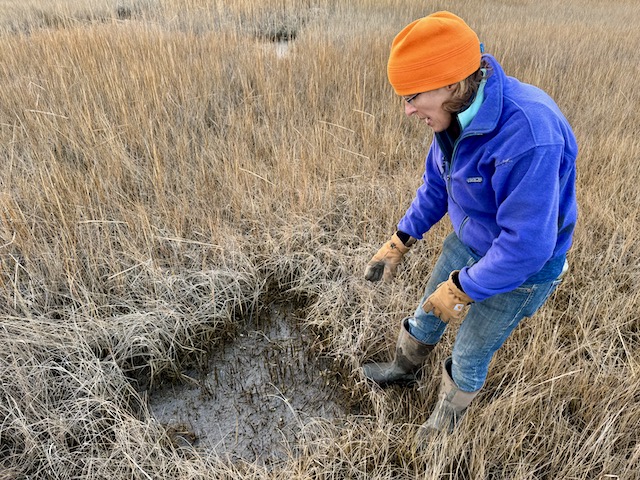
Wenley Ferguson from Save the Bay points out a small area where vegetation has died off due to standing water on the marsh platform.
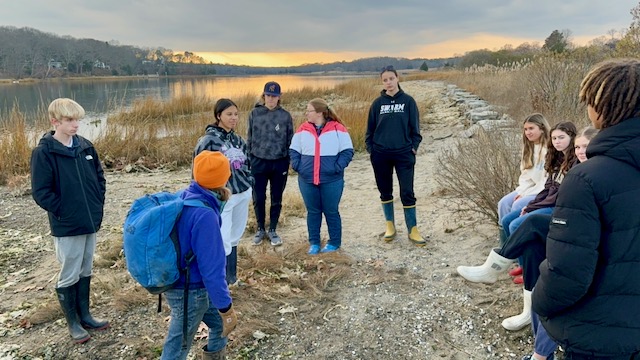
STB’s Wenley Ferguson talks with students from Rocky Hill Country Day School about the importance of marsh habitat in December 2023.
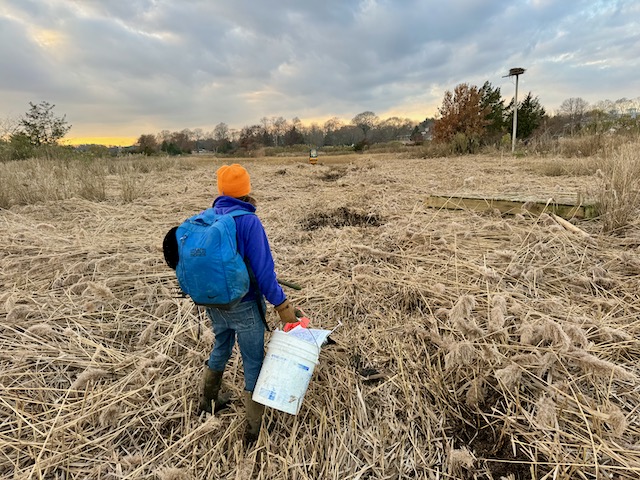
An area of the invasive plant Phragmites that had been cut by hand. Because it grows so densely, the Phragmites is acting as a impediment to the marsh being able to migrate inland.

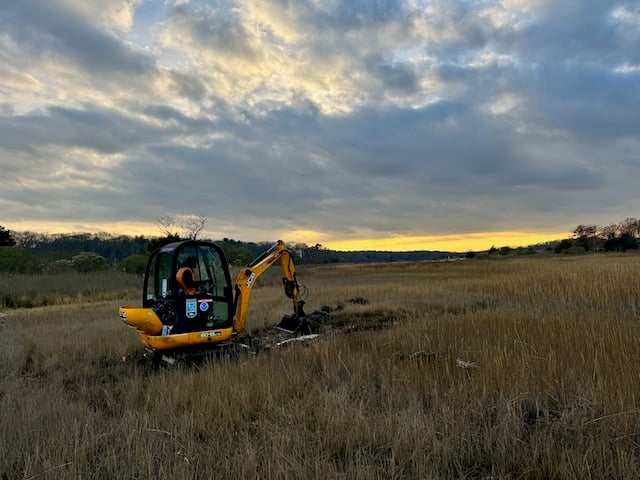

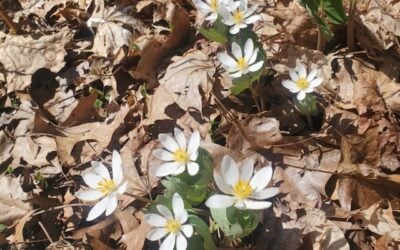


 Subscribe
Subscribe